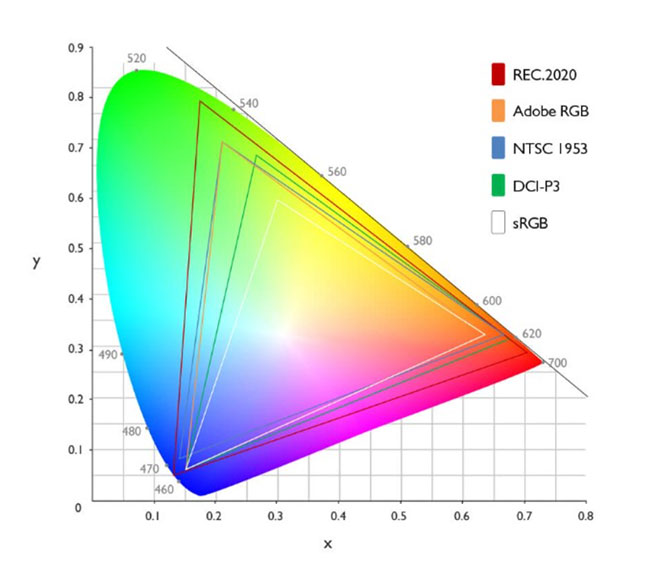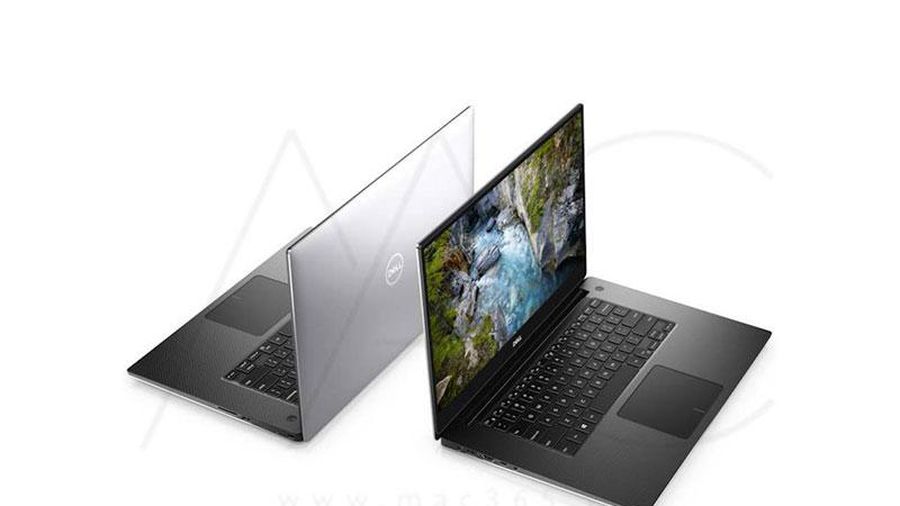What is sRGB? learn about sRGB
sRGB stands for Standard Red Green Blue and is a color space, or set of specific colors, created by HP and Microsoft in 1996 with the goal of standardizing colors. represented by electronic devices.
sRGB is the most commonly used color system today and is currently used for Windows, most web browsers, and nearly all tablet and PC games, unless they are HDR.
When searching for the best gaming monitor, TV, or other electronic device, you may come across a product that claims to cover a certain percentage of the sRGB color system.
This tells you how much of the sRGB color space the monitor can reproduce (theoretically, actual results need to be verified through testing).
The display or color gamut of another device tells you whether or not the device can reproduce the color systems or which systems and how much of the said color system(s) on the device can reproduce (between 0% and 100% or even greater). Besides sRGB, other popular color systems include Adobe RGB and DCI-P3, both of which are larger or include more colors than sRGB.
Standard sRGB
The International Electrotechnical Commission (IEC) standardized sRGB in 1999. The color system can be defined by its triangle on the 1931 CIE XY Chromatic Diagram created by the Projection Commission. International Commission on Illumination (CIE).
The CIE 1931 XY chroma diagram shared via BenQ below shows the full range of colors visible to the human eye. Within that color range is a white triangle, outlining the colors required by the sRGB standard.
For example, if you try to view an image with colors outside of that triangle on an sRGB display, those additional colors will look inaccurate and unsaturated. Other popular color systems are also identified in the diagram below.

Color systems define their color ranges through specific coordinates on the chroma chart above. The coordinates for sRGB color are based on the International Telecommunication Union Radiocommunication Sector (ITU-R) standard BT.709, also known as Rec .709 and ITU 709, created for HDTVs.
sRGB vs. DCI-P3
While sRGB is considered standard, other color systems may also be used. For example, Adobe RGB, although not an international standard, is popular in professional environments because it offers more colors and is created by Adobe, giving it an appeal to users. software like Adobe Photoshop. DCI-P3 is another popular color system that is similar to Adobe RGB in terms of the colors it covers, but is targeted at video and is internationally standardized.
DCI-P3 and Adobe RGB are similar and both larger (including more colors) than sRGB. To be precise, the DCI-P3 display has a 25% wider color gamut than the sRGB display. Another difference between sRGB and DCI-P3 is that the DCI-P3 can handle 10-bit color, which is key for HDR content.
Speaking of HDR, DCI-P3 is also the color system that HDR content uses, so if you want the best HDR monitor or display, you should look for an option with the DCI-P3 range. The full coverage of sRGB will not completely depict the format. If you view HDR content on an sRGB display, (assuming that display supports the HDR format), you won't be able to access the full range of colors available in that media. But if you want a good HDR monitor that allows you to correctly view Windows and SDR content, then you should make sure that the monitor also has the correct sRGB mode, where it converts the correct gamut to the sRGB color range .
The article finds that for SDR gaming and entertainment, delivering more colors than sRGB requires - whether by oversaturating the sRGB color system or using DCI-P3 - can be very enjoyable. taste, even if it's not entirely accurate. In fact, many of the currently tested displays offer more than 100% sRGB coverage, making content created in the sRGB color system look more saturated than the content creators intended.
You should read it
- Top 10 best 4K laptops of 2020: Dell XPS 15 at the top
- What is the profile color?
- Harmful myths when adjusting the TV definition
- HP released a new multimedia notebook
- How to Tell if You're Watching TV in HD
- Learn about DDR5 RAM: The new standard for RAM
- Compare U2F and UAF security standards
- How to compare documents, compare files, compare folders with WinMerge
- How is GPT and MBR different when partitioning a drive?
- Is TLS or SSL a better web encryption standard?
- Reg command compare in Windows
- Laptop supports watching the maximum HD movie - Acer Aspire 4738






 Learn the difference between sRGB and Adobe RGB
Learn the difference between sRGB and Adobe RGB Top 10 best 4K laptops of 2020: Dell XPS 15 at the top
Top 10 best 4K laptops of 2020: Dell XPS 15 at the top What is the profile color?
What is the profile color? 7 simple tips to help you learn new languages in just one week
7 simple tips to help you learn new languages in just one week The secret to effective language learning from a 35-year-old man who speaks 11 languages
The secret to effective language learning from a 35-year-old man who speaks 11 languages How to learn English for free with Vndoc, from basic to advanced
How to learn English for free with Vndoc, from basic to advanced